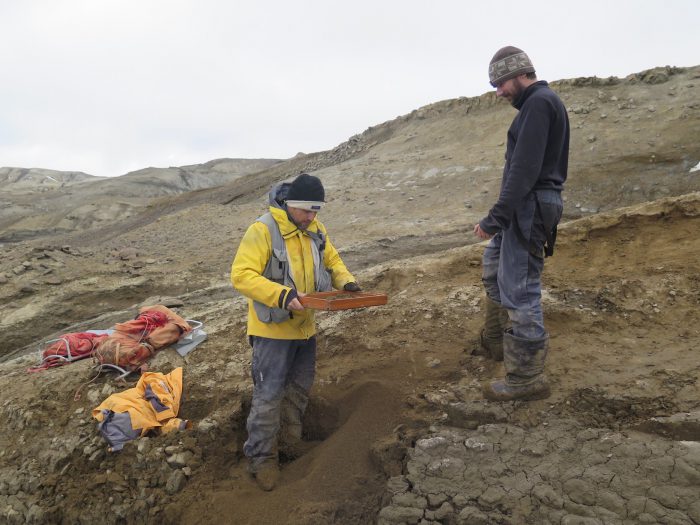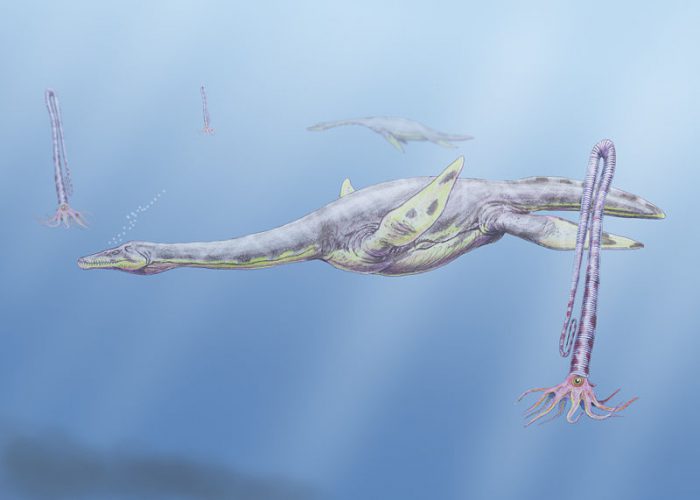A new fossil discovery in Antarctica is a record breaker. This fossil is a giant elasmosaurid (say ee-LAHZ-moh-SAH-rid), the longest and heaviest one ever found.
Elasmosaurids were a family of plesiosaurs. You know plesiosaurs as the long-necked prehistoric marine reptiles that were the sauropods of the ocean. And elasmosaurids? They had the longest necks of all. They kind of looked like someone stuck an anaconda on the body of a leatherback sea turtle!
Many of these reptiles had necks that were especially thin compared to the rest of their bodies. But one species, Aristonectes (say ah-RIHS-toh-nek-tees), was a bit stockier and thickly built. This is the species that scientists from La Plata Museum in Argentina are guessing that they found in Antarctica. This specimen is 11 metres (36 feet) long — as long as a telephone pole is tall!
Long fossil, long process

Researchers worked many years to capture this incredible fossil. (J.P.O'Gorman/IAA)
Though this fossil is only just being confirmed to the public, it has actually been known about since 1989. It was found on Seymour Island, Antarctica. It took three extra expeditions in 2005, 2012, and 2017 to fully remove the fossil from the rock. Given that paleontologists estimate that the reptile would've weighed around 15 tons (twice as heavy as an elephant), we can understand why it took so long!
Though scientists aren't 100% sure if it is indeed an Aristonectes or a brand new species, it was clearly worth the effort all the same.
A special place
It may not seem like much, but there are riches in Seymour Island if you know where to look! (Getty Embed)
Seymour Island may not look like a particularly exciting place from the air, but it is a significant spot of paleontologists. Exposed on its surface is something called the Cretaceous-Paleogene (K-Pg) boundary. This is the layer of rock that dates back to around 65 million years ago, a.k.a. the extinction of the dinosaurs. Dig just below the K-Pg boundary, and you find a bunch of fossils that date back to the final days of the dinosaur era!
That's where our extra-jumbo elasmosaurid was discovered — around 2 metres (7 feet) below the boundary. Scientists guess that it lived only 30,000 years before the great extinction. Who knows what other fossil treasures are hiding from that time? We're excited to find out!
 The fossil is believed to be an Aristonectes, though further research needs to be done. (Dmitry Bogdanov/Wikimedia Commons)
The fossil is believed to be an Aristonectes, though further research needs to be done. (Dmitry Bogdanov/Wikimedia Commons)










Wow that’s interesting
I agree!
😀 it sounds really cool ? I wish I could go see it 😛 hopefully they figure everything out
7 out of 10.
It was ok
Cool, but I don’t know what most of the words mean…